
The Megaruma is a river of northeastern Mozambique, flowing through Ancuabe District. It has its source to the northeast in Mount Mecumba. [1] A bridge was built over the river in 1954. [2]

The Megaruma is a river of northeastern Mozambique, flowing through Ancuabe District. It has its source to the northeast in Mount Mecumba. [1] A bridge was built over the river in 1954. [2]

The Warsaw Treaty Organization (WTO), officially the Treaty of Friendship, Cooperation and Mutual Assistance, commonly known as the Warsaw Pact (WP), was a collective defense treaty signed in Warsaw, Poland between the Soviet Union and seven other Eastern Bloc socialist republics of Central and Eastern Europe in May 1955, during the Cold War. The Warsaw Pact was the military complement to the Council for Mutual Economic Assistance (CoMEcon), the regional economic organization for the socialist states of Central and Eastern Europe. The Warsaw Pact was created in reaction to the integration of West Germany into NATO in 1955 per the London and Paris Conferences of 1954, but it is also considered to have been motivated by Soviet desires to maintain control over military forces in Central and Eastern Europe.
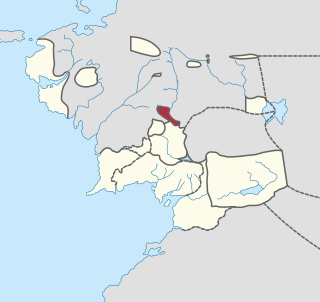
In J. R. R. Tolkien's legendarium, Lothlórien or Lórien is the fairest realm of the Elves remaining in Middle-earth during the Third Age. It is ruled by Galadriel and Celeborn from their city of tree-houses at Caras Galadhon. The wood-elves of the realm are known as Galadhrim.
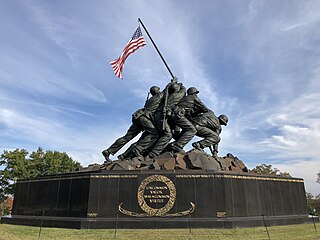
The United States Marine Corps War Memorial is a national memorial located in Arlington County, Virginia, in the United States. The memorial was dedicated in 1954 to all Marines who have given their lives in defense of the United States since 1775. It is located in Arlington Ridge Park within the George Washington Memorial Parkway, near the Ord-Weitzel Gate to Arlington National Cemetery and the Netherlands Carillon. The memorial was turned over to the National Park Service in 1955.

The Tangiwai disaster occurred at 10:21 p.m. on 24 December 1953 when the Whangaehu River bridge collapsed beneath Wellington-to-Auckland express passenger train No. 626 at Tangiwai, in the central North Island of New Zealand. The locomotive and first six carriages derailed into the river, killing 151 people. The subsequent Board of Inquiry found that the accident was caused by the collapse of the tephra dam holding back nearby Mount Ruapehu's crater lake, creating a large lahar in the Whangaehu River, which destroyed one of the bridge piers at Tangiwai only minutes before the train reached the bridge. The disaster remains New Zealand's worst rail accident.

The Thames River is a short river and tidal estuary in the state of Connecticut. It flows south for 15 miles (24 km) through eastern Connecticut from the junction of the Yantic River and Shetucket River at Norwich, Connecticut, to New London and Groton, Connecticut, which flank its mouth at Long Island Sound. The Thames River watershed includes a number of smaller basins and the 80-mile-long Quinebaug River, which rises in southern Massachusetts and joins the Shetucket River about four miles northeast of Norwich.

Kumbh Mela or Kumbha Mela is a major pilgrimage and festival in Hinduism. It is celebrated in a cycle of approximately 12 years at four river-bank pilgrimage sites: the Prayagraj, Haridwar (Ganges), Nashik (Godavari), and Ujjain (Shipra). The festival is marked by a ritual dip in the waters, but it is also a celebration of community commerce with numerous fairs, education, religious discourses by saints, mass feedings of monks or the poor, and entertainment spectacle. The seekers believe that bathing in these rivers is a means to prāyaścitta for past mistakes, and that it cleanses them of their sins.
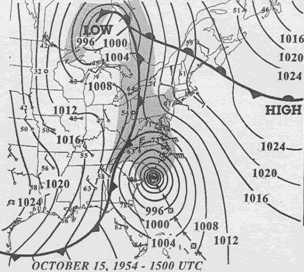
Hurricane Hazel was the deadliest, second costliest, and most intense hurricane of the 1954 Atlantic hurricane season. The storm killed at least 469 people in Haiti before striking the United States near the border between North and South Carolina as a Category 4 hurricane. After causing 95 fatalities in the US, Hazel struck Canada as an extratropical storm, raising the death toll by 81 people, mostly in Toronto. As a result of the high death toll and the damage caused by Hazel, its name was retired from use for North Atlantic hurricanes.

The River Taw rises at Taw Head, a spring on the central northern flanks of Dartmoor, crosses north Devon and close to the sea at the town of Barnstaple, formerly a significant port, empties into Bideford Bay in the Bristol Channel having formed a large estuary of wide meanders which at its western extreme is joined by the estuary of the Torridge.
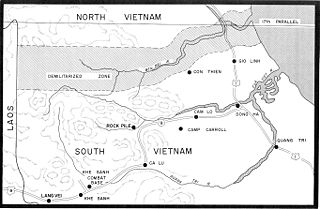
The Vietnamese Demilitarized Zone was a demilitarized zone established as a dividing line between North and South Vietnam from July 1954 to 1976 as a result of the First Indochina War. During the Vietnam War (1955-1975) it became important as the battleground demarcation separating North from South Vietnamese territories. The zone ceased to exist with the reunification of Vietnam on 2 July 1976, though the area remains dangerous due to the numerous undetonated explosives it contains.

The St. Johns Light is an active lighthouse in Jacksonville, Florida, marking the mouth of the St. Johns River. Built in 1954, it is located on Naval Station Mayport in the Mayport area. It was erected to replace a lightship, which itself replaced the still-standing Old St. Johns River Light. It is the fourth lighthouse built at the mouth of the St. Johns since 1830. It was listed on the National Register of Historic Places in 2018.

Tooma is a village community in the eastern part of the Riverina and situated about 11 kilometres (6.8 mi) east of Welaregang and 34 kilometres (21 mi) south of Tumbarumba.

Sinclair Pass is a high mountain pass in Kootenay National Park between the Columbia and Kootenay Rivers to the northeast of present-day Radium Hot Springs in the province of British Columbia, Canada.
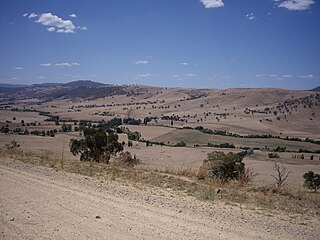
Tooma River, a perennial stream that has had some of its flow diverted as a result of the Snowy Mountains Scheme, is part of the Murray catchment within the Murray–Darling basin and is located in the Australian Alpine region of New South Wales and Victoria, Australia.

The 1954 United States House of Representatives elections in South Carolina were held on November 2, 1954 to select six Representatives for two-year terms from the state of South Carolina. The primary elections were held on July 13. All six incumbents were re-elected and the composition of the state delegation remained solely Democratic.
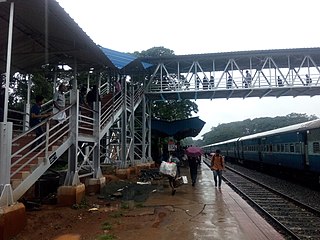
Nilambur–Shoranur line is a 66 kilometres (41 mi) long single line, non-electrified broad gauge (1676 mm) railway spur branch line of the Indian Railways connecting Nilambur Road railway station in Malappuram district with Shoranur Junction in Palakkad district in the state of Kerala. It is a branch line administered by the Palakkad railway division of the Southern Railway zone and one of the shortest broad gauge railway lines in India.
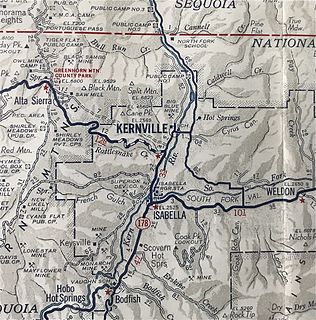
Kernville is a former settlement in the Kern River Valley of the Sierra Nevada, in Kern County, California.

The South African Railways Class 4E of 1952 was an electric locomotive.
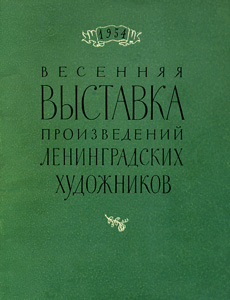
Spring Fine Art Exhibition of Leningrad artists become one of the largest Soviet Art Exhibition of 1954 and one of the first Art Exhibitions after Joseph Stalin's death. The Exhibition took place in Leningrad Union of Soviet Artists Exhibition Halls on Bolshaya Morskaya st. 38.
SS John Gorrie was a Liberty ship built in the United States during World War II. She was named after John Gorrie, an American physician, scientist, inventor of mechanical cooling, and humanitarian.
| This article related to a river in Mozambique is a stub. You can help Wikipedia by expanding it. |